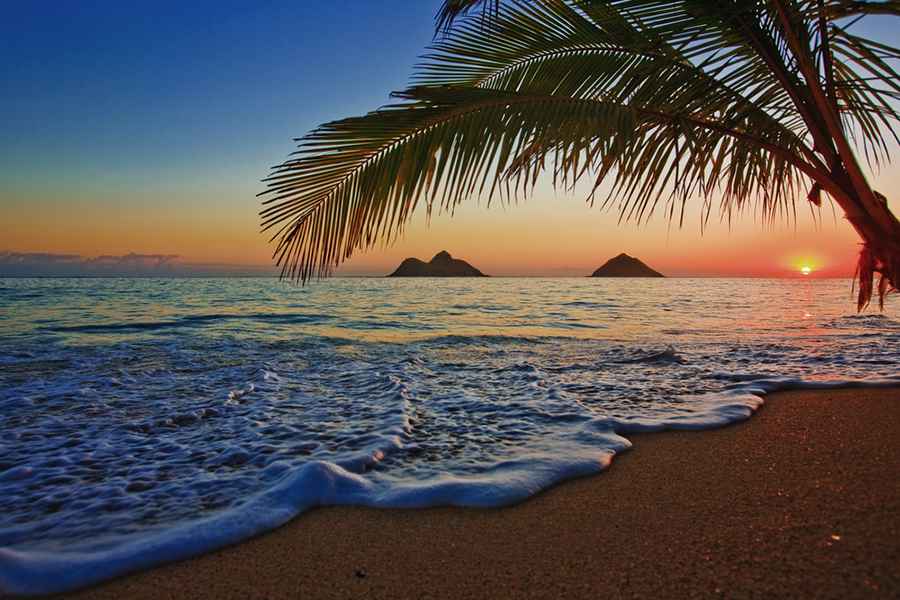How to Safely Explore and Enjoy Hawaii's Beauty
Hawaii, a paradise encompassing a unique blend of lush landscapes, vibrant culture, and breathtaking coastlines, beckons adventurers and nature lovers alike. However, the allure of its beauty comes with the need for responsibility and awareness to ensure both the safety of the visitors and the preservation of the islands' natural and cultural heritage.

In this blog, we'll guide you through essential tips on how to safely explore and enjoy Hawaii's myriad attractions, from its secret beaches and majestic volcanic parks to its sacred sites, ensuring your adventure is as enriching as it is conscientious. Join us on a journey to discover how to immerse yourself fully in the Hawaiian experience, respecting its environment and traditions, while creating unforgettable memories in these islands of wonder.
Marine Life Watching
Just imagine snorkeling in the crystal-clear waters of Hawaii, encountering a vast array of colorful tropical fish and sea turtles, or even spotting majestic humpback whales during their annual migration. Hawaii's oceans are a spectacle of biodiversity, offering some of the most memorable marine life-watching opportunities in the world. From the majestic options for whale watching to the serene and colorful underwater world of snorkeling, there's something for everyone in Hawaii. This activity is not only an unforgettable experience but also a way to support the local economy, as most tour operators are locally owned and operated. When indulging in marine life-watching activities, it's crucial to follow guidelines for the safety and protection of both yourself and the animals.
Understanding Hawaii's Unique Environment
Hawaii's environment is a tapestry of unique ecosystems, ranging from lush rainforests to volcanic deserts, each supporting diverse flora and fauna found nowhere else on Earth. The islands' isolation in the Pacific Ocean has led to the evolution of a vast number of endemic species, making Hawaii a global hotspot for biodiversity. Yet, this fragility necessitates a respectful and mindful approach to exploration.
The islands' volcanic origins also play a pivotal role in their geography and climate, creating microclimates that can vary dramatically over short distances. One moment, you could be basking in the radiant sunshine on a pristine beach, and the next, enveloped by the cool mist of a tropical rainforest. Understanding these environmental dynamics is crucial for safe and responsible exploration, as weather conditions can change rapidly.
Visitors are encouraged to learn about Hawaii's delicate ecosystems and the efforts to preserve them. Engaging with local conservation initiatives, adhering to guided trails, and minimizing your ecological footprint are just a few ways to contribute positively. By acknowledging and respecting Hawaii's unique environment, travelers can ensure that its beauty and diversity remain for generations to come.
Sun Safety and Protection
While Hawaii's sun-filled days are a major draw for visitors, it's important to recognize the risks associated with prolonged sun exposure and take appropriate measures for sun safety and protection. The island's proximity to the equator means UV rays are more direct and stronger, increasing the risk of sunburn, heat exhaustion, and long-term skin damage. To enjoy Hawaii's outdoors while safeguarding your health, always apply a broad-spectrum sunscreen with an SPF of 30 or higher, generously reapplying every two hours or immediately after swimming or sweating.
Wearing protective clothing, such as lightweight long-sleeved shirts, hats, and UV-blocking sunglasses, can provide additional defense against the sun’s harmful rays. Planning outdoor activities during the cooler, less sunny parts of the day—early in the morning or later in the afternoon—can also help minimize UV exposure. By taking these precautions, you can relish in Hawaii’s sunshine safely, ensuring your visit remains both enjoyable and healthy.
Water Safety and Beach Etiquette
When visiting Hawaii's stunning beaches, it’s essential to practice water safety and beach etiquette to ensure a pleasant experience for yourself and others. Hawai'i's waters can be as unpredictable as they are beautiful, with conditions that vary significantly across different parts of the islands. Before entering the water, familiarize yourself with the day's conditions, including tide schedules, and always heed local warnings and lifeguard advice. Understanding and respecting the power of the ocean can prevent accidents and ensure a safe swimming experience.
For those new to the ocean, or if you’re unfamiliar with the local conditions, consider swimming at beaches with lifeguard supervision. Rip currents, hidden reefs, and sudden changes in water depth can pose unexpected dangers even to experienced swimmers. In case of strong currents, remember to swim parallel to the shore until you are out of the current, then swim back to shore.
Beach etiquette is equally important. This includes packing out what you pack in, leaving wildlife undisturbed, and keeping a respectful distance from others. Many beaches in Hawaii are also culturally significant sites, so always treat these areas with respect. By following these guidelines, visitors can enjoy Hawaii’s beaches safely and sustainably, preserving their beauty for future generations.
In conclusion, exploring and enjoying Hawaii's beauty requires a responsible and mindful approach. By understanding the unique environment, practicing sun and water safety, and respecting cultural sites and etiquette, visitors can create unforgettable experiences while preserving the islands' natural and cultural heritage. Remember to always leave nothing but footprints and take nothing but memories as you embark on your journey through these enchanting islands. Aloha!
Image credit: Depositphotos